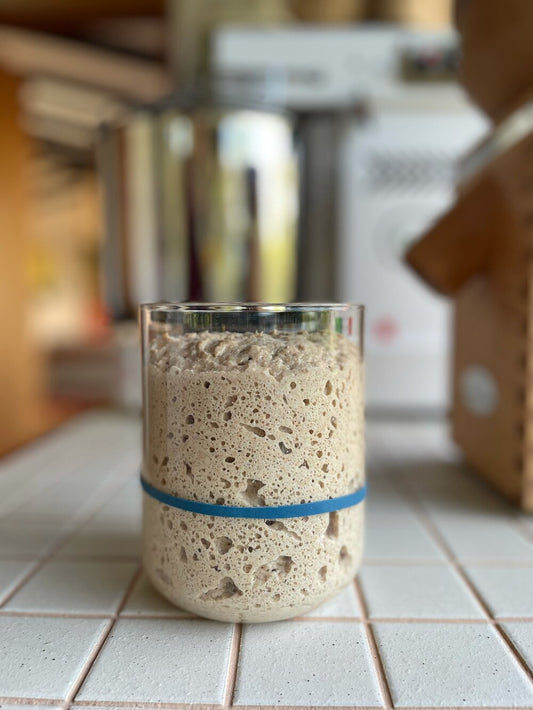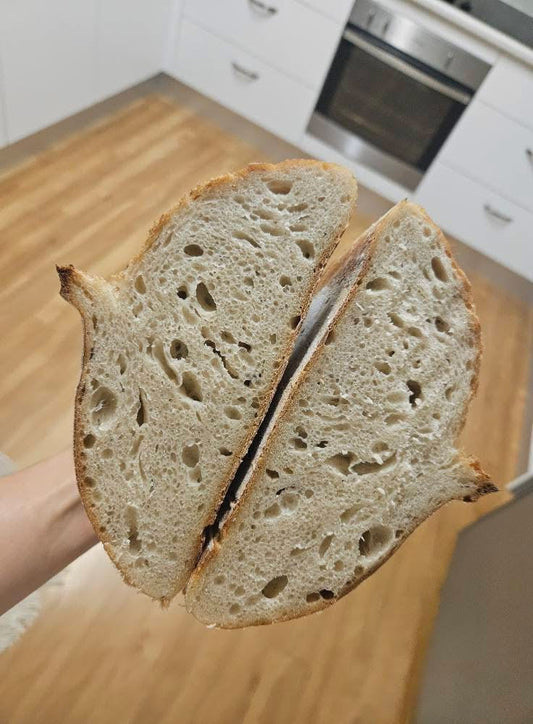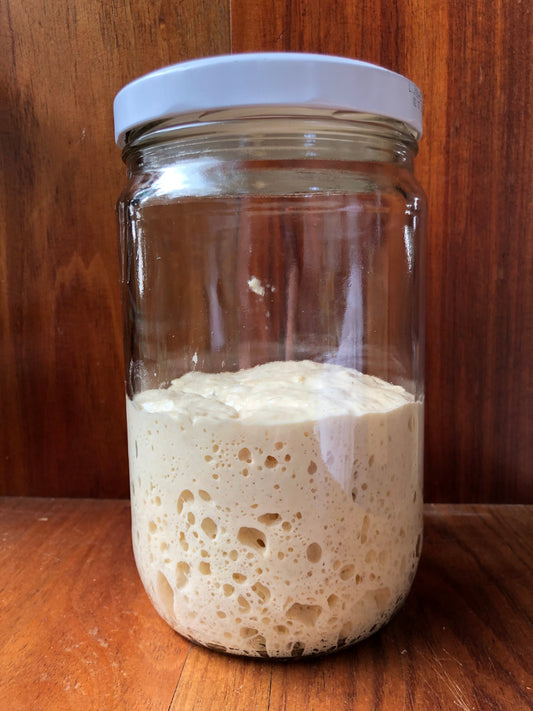For Bread Kit INSTRUCTIONS
If you’ve recently purchased Complete Starter Kits or Basic Starter Kits, please start your bread journey here: Bread Kit Guide. For gluten-free starter maintenance & how to feed & look after your starter please go here.
Sourdough Starter Maintenance: The Key to Perfect Homemade Bread
A great sourdough starter is the foundation of beautiful, flavourful bread. But maintaining a healthy starter can feel intimidating for beginners. The truth is, sourdough starter maintenance isn’t about age or special tricks — it’s about consistency, care, and understanding the life inside your jar.
What Is a Sourdough Starter?
A sourdough starter is a living culture made of wild yeast and lactic acid bacteria. Together, these microorganisms ferment flour and water, creating the gases and acids that give sourdough its characteristic rise and flavor.
Wild yeast produces carbon dioxide, which makes the bread rise.
Lactic acid bacteria produce lactic and acetic acids, giving sourdough its tangy flavor.
Both are most active around 2 hours after feeding at room temperatures of 24–26ºC, making timing and temperature key factors in starter maintenance.
Feeding Your Starter
The cornerstone of a healthy starter is regular feeding. Feedings replenish the flour and water your starter needs to stay strong and active.
Hydration Ratio: A common ratio is 1:4:4 (starter:flour:water). For example, 5 g starter : 20 g flour : 20 g water.
Frequency:
- If baking several times a week, keep your starter at room temperature and feed every 12 hours.
- If baking less frequently, store your starter in the refrigerator and feed once a week.
Keeping Starter At Room Temperature
If you bake several times a week, you can keep your starter on the countertop at room temperature (ok for cooler climates like VIC & TAS — though this isn’t recommended in warm, humid climates). You’ll need to feed it twice daily, roughly every 12 hours, using a 1:4:4 (starter:flour:water). For example, 5 g starter : 20 g flour : 20 g water.
It is best not to leave your starter for more than 24 hours without feeding at room temperature (especially in hot humid climates) as it encourages spoilage & mould. It will get highly acidic & sometimes have a dark liquid on top, a naturally occurring alcohol called “hooch”.
Keeping Starter In The Fridge (Preferred for Most Bakers)
If feeding twice a day isn’t realistic, you can absolutely store your starter in the fridge. Here’s how to do it smartly:
-
Keep a small jar of starter in the fridge, about a tablespoon is sufficient.
-
When you’re ready to bake, take it out, feed it once or twice to wake it up, and use what you need.
-
After baking, scrape down the jar, leave a tiny bit inside, feed it a little water and flour, let it sit for a couple of hours at room temp, then pop it back in the fridge.
Do this weekly, and your starter will stay strong — no discard, no stress.
Some Real World Examples
Storing Up to 1 week in the fridge
Let your starter come to room temperature before beginning the starter build based on the recipe.
Storing Up to 2 weeks in the fridge
Let your starter come to room temperature then feed it once a 1:4:4 ratio - starter: flour: water (e.g 5g starter: 20g flour: 20g water). Once it has doubled, then do you starter build based on the recipe.
Must-read Guides About Sourdough Starters:
The Truth About Feeding Your Sourdough Starter: Why Once a Day Isn't Enough
How to Keep Your Sourdough Starter Strong and Happy
Want to Skill Up or Need More Help?
Level up with our KNOWLEDGE BASE — you’ll find informative guides and tips!
Our support team is always happy to assist with your sourdough questions! Chat with us via the website chat 💬 (bottom right corner) Monday to Friday, 9am–5pm.
For community help, join our friendly Facebook Support Group.
Please note: Our team is unable to respond to enquiries via social media or WhatsApp. Thank you for your understanding.





